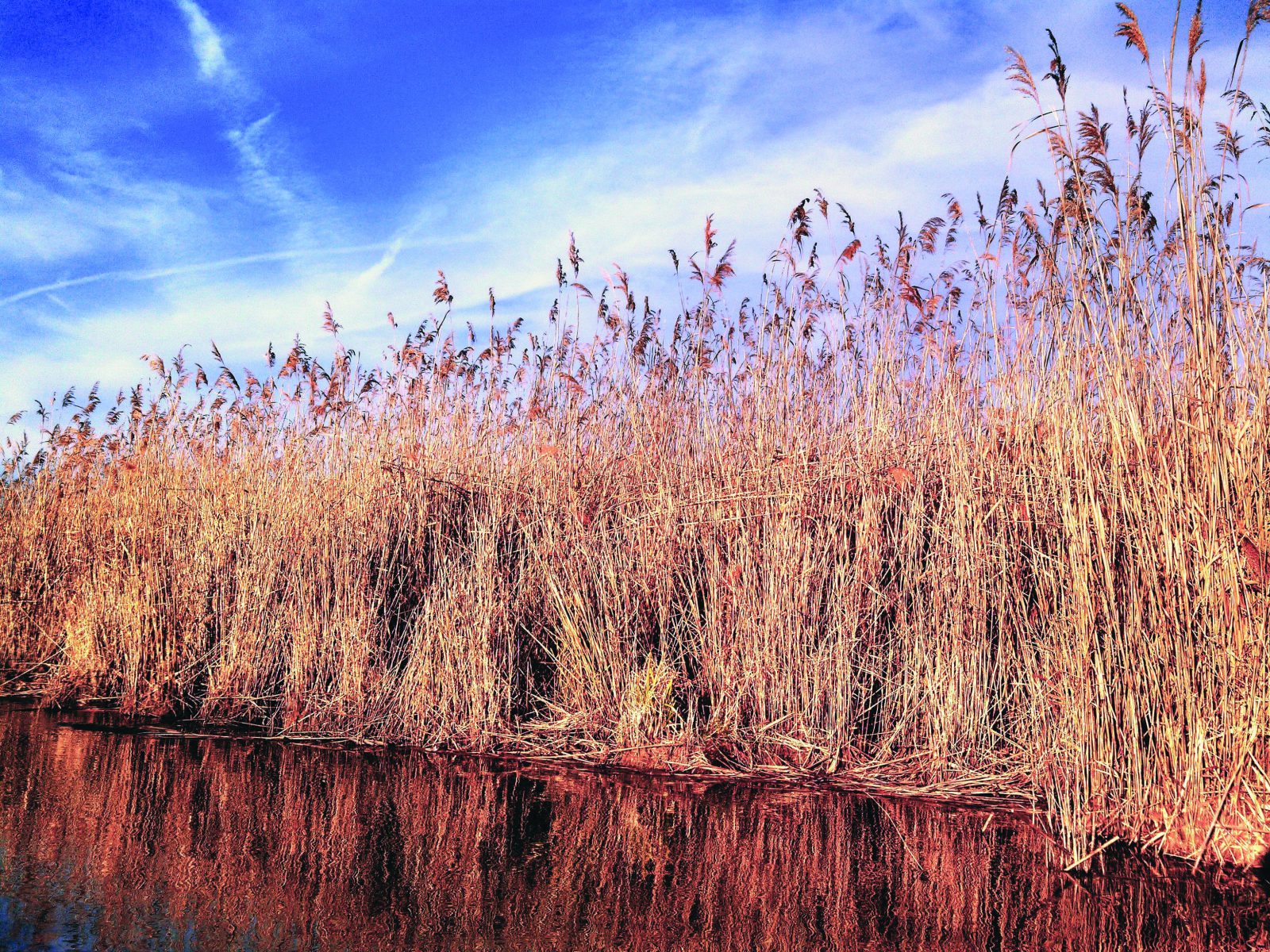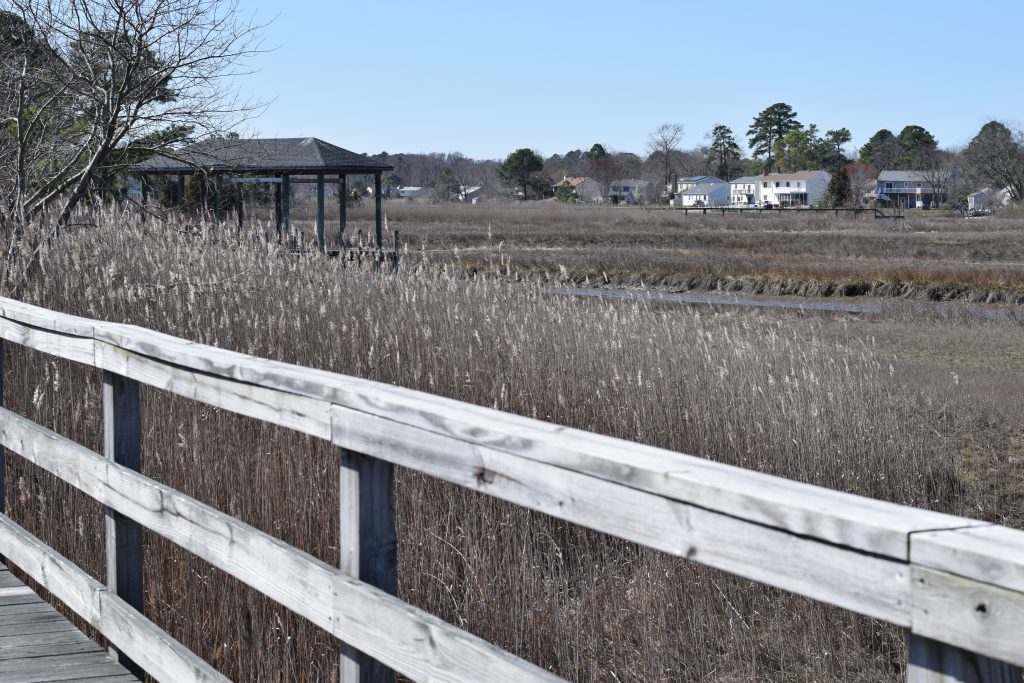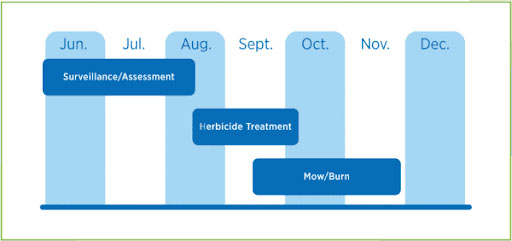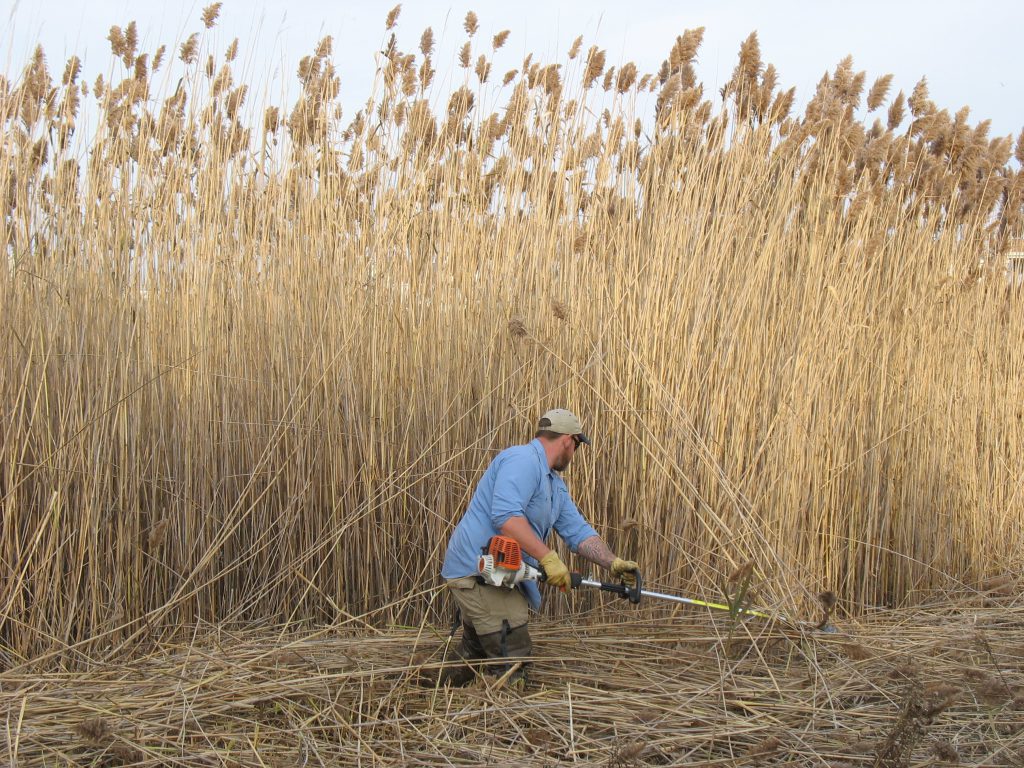
A Guide to the Control and Management of Invasive Phragmites
The only thing many of us love more than a healthy, beautiful waterbody is an unobstructed view. Unfortunately, Phragmites are one invasive wetland plant species that can take quite a toll on the health and aesthetic beauty of the aquatic ecosystems that HOAs, golf courses, and other groups rely on as important assets. Due to the unique management challenges associated with Phragmites, stakeholders must make some difficult decisions that can have far-reaching consequences on the ecosystem and their businesses and communities. A partner like SOLitude can help support decision-makers during this process and help them reclaim their properties and ensure Phragmites don’t cause headaches ever again.
What are Phragmites?
Phragmites australis (otherwise known as the common reed) is an invasive, perennial tall grass often found in wetlands or surrounding ponds and lakes. They are easily distinguished by their tall heights, which can reach fifteen feet, and feathery seed plumes.
What makes phragmites so troublesome?
Phragmites are an invasive species that has spread throughout North America via railroads, roadways, habitat disturbances, and urban development.
While they may start as unobtrusive patches – and may even be aesthetically pleasing – they can spread quickly and cause significant damage:
- Quickly absorb water, decimating waterbodies
- Impede recreational use of water
- Obstruct stormwater management systems
- Threaten or even destroy waterfowl habitats
- Choke out native and beneficial plant species
- Form areas of dry, hazardous vegetation
Left unchecked, they can wreak havoc on the local ecosystem, waterbodies, wildlife, plants, recreation, and more. If allowed to grow exponentially, Phragmites may devalue properties and communities by rendering areas unusable and unsightly.
How can Phragmites be controlled?
Timing is everything. Depending on the region, Phragmites’ feathery plumes typically appear in June and fill with seeds by August. During September, they cross-pollinate before shedding and spreading their seeds in the fall and early winter.
During winter and its subsequent frosts, each phragmites plant stores nutrients in its rhizomes underground. In the spring, this rhizome network germinates new seedlings. This is how the plant sustains itself even as its stems, plumes, and leaves turn brown and die off.
Timeline for Controlling Phragmites:
Equipment Used to Control Phragmites
Because Phragmites often grow in remote, difficult-to-reach areas, the tailored application of highly-targeted pesticides is often the most effective strategy – often recurring year after year until complete eradication is achieved. This can be accomplished with an array of equipment:
- Handheld Equipment: Handheld equipment can be used in very small areas with scattered or isolated plants and is particularly useful for directly targeting Phragmites without damaging native plants.
- Backpack: Backpack sprayers work best in areas less than five acres with plants that are scattered to moderately dense. They allow licensed applicators to spray close to the Phragmites while avoiding damage to native plants.
- UTVs: Ground vehicles reduce treatment time and improve plant coverage when handling large areas. These are also often paired with backpack sprayers or adjustable sprayers to meet the site’s conditions.
- Boat/Airboat: When necessary, shallow draft boats can be used to complete Phragmites treatments from within a lake or pond, which is helpful when Phragmites grow along inaccessible shorelines. Airboats can also be used access to marshes and swamps that are too wet for ground vehicles, but not flooded enough for traditional boats.
- Drones: Professionally operated drones equipped with a GPS guidance system can be used to survey dense or dangerous areas and apply herbicides remotely from a safe location.
Bring Balance Back to Your Ecosystem
SOLitude is committed to guiding and helping property managers, golf course superintendents, private property owners, and community leaders eliminate Phragmites and other aquatic invasive species threatening the health and longevity of their waterbodies – so they can enjoy healthy, beautiful ecosystems for years to come.
SOLitude Lake Management is a nationwide environmental firm committed to providing sustainable solutions that improve water quality, enhance beauty and preserve natural resources.
SOLitude’s team of aquatic scientists specializes in the development and execution of customized lake, stormwater pond, wetland and fisheries management programs. Services include water quality testing and restoration, algae and aquatic weed control, installation and maintenance of fountains and aeration systems, shoreline erosion control, muck and sediment removal and invasive species management. SOLitude partners with homeowners associations, golf courses, private landowners, businesses and municipalities. SOLitude Lake Management is part of Rentokil, a leading business services company, operating across the United States, Canada and Puerto Rico.
For more information, visit SOLitude Lake Management at solitudelakemanagement.com, and connect on Facebook, LinkedIn and Twitter.
















